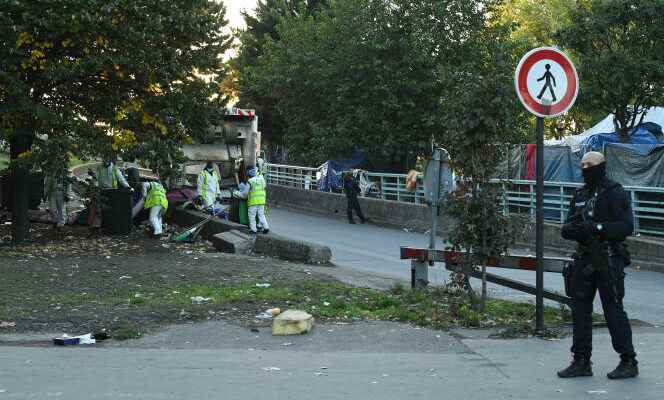At the Porte de La Villette, in Paris, you no longer see those you didn’t want to see. Square Forceval, occupied for a year by crack users living in this corner of 19e district by the prefecture, is nothing more than a muddy and deserted space since the evacuation of the camp on October 5. The tents set up all around the square and their occupants have disappeared.
About twenty days after the dismantling, announced final, a general relief therefore dominates among the residents and the mayors involved, who have noted a significant drop in nuisance. A decrease in particular due to a continuous police presence for two weeks around the Porte de La Villette, where a handful of law enforcement trucks are parked. The prefecture also specified that this “securing will be[it] insured for as long as the risk of reconstitution persists[it] », what the authorities want to avoid at all costs.
If calm has returned to the neighborhood, all local actors agree that the issue is far from settled. “The prefecture only dispersed the problembreathes Thibault Mahiet, resident and member of the Villette Village collective. What changes is that we are no longer the only ones to suffer, so it is more bearable. »
“Distress situation”
After the evacuation, many “crackers”, who had notably been warned of the dismantling in advance, found themselves wandering in the north of Paris as far as Porte de Clignancourt, without a fixed meeting point. Small scenes are born and quickly undone. “A good part has dispersed in the different neighborhoods. The police are therefore mobilized for a hunt for “crackers” in town, which easily becomes a hunt for facies”regrets Alain Morel, director of the Oppelia association, which accompanies consumers in particular to get them out of addiction.
Several of them converged on the Porte de La Chapelle, where the Aurore association offers a rest area. “We receive 200 people every day whereas we received 80 before the evacuation of the Square de Forceval”, says Léon Gomberoff. According to the association’s activities director, the dismantling of the camp has made it more difficult for users to acquire crack. In the best of cases, this forced weaning may have allowed some patients to integrate more easily into a care process. Conversely, other profiles continue to wander in nature and find themselves “in distress”which can lead to unpredictable behavior.
You have 51.98% of this article left to read. The following is for subscribers only.
